- Understanding SEO and It’s Importance
- What is SEO?
- Common On-Page SEO Mistakes
- Overlooking Title Tags and Meta Descriptions
- Poor Use of Headers and Subheaders
- Neglecting Content Quality
- Technical SEO Errors to Avoid
- Slow Site Speed
- Mobile Unfriendliness
- Broken Links and Bad Redirects
- Off-Page SEO Missteps
- Ineffective Backlink Strategies
- Ignoring Local SEO Practices
- Analytics and Tracking SEO Mistakes
- Not Using Google Analytics Data
- Not Submitting a Sitemap
- Image and Multimedia SEO Mistakes
- Missing Alt Text and Broken Images
Imagine pouring hours into crafting the perfect content for your website, only to find it buried deep in search engine results, unseen by your target audience. It’s a frustrating scenario that might be due to some common SEO mistakes you’re unknowingly making. SEO, or search engine optimization, is crucial for boosting your visibility online, but it’s easy to get it wrong if you’re not careful.
One such mistake is duplicate content, which can confuse search engines and dilute your page’s visibility in search results.
From overlooking keyword optimization to neglecting mobile usability, these errors can significantly hinder your website’s potential to climb up the rankings. Understanding these pitfalls is the first step towards turning your website into a traffic magnet. Let’s jump into some of the most frequent SEO blunders that could be holding back your site from achieving its full potential.
Understanding SEO and It’s Importance
When you recognize the role of search engine optimization (SEO) in enhancing website visibility, you understand why mastering it is crucial for success in any online try. SEO isn’t just about improving your rankings in search results; it serves as a fundamental aspect of your digital presence, significantly influencing how your audience finds and interacts with your content.
What is SEO?
SEO refers to the tailored techniques and strategies used to increase the quantity and quality of traffic to your website through organic search engine results. Effectively, it helps your website become more discoverable. When potential customers search for topics related to your business, a strong SEO strategy ensures that your pages appear among the top results.
- Increases Visibility and Traffic: A well-optimized website gains increased visibility, which translates to more traffic and more opportunities to convert prospects into customers.
- Builds Trust and Credibility: Appearing on the first page of search engines can improve trust among potential customers. If your site ranks highly, it’s often perceived as more credible.
- Enhances User Experience: SEO involves optimizing the user experience on your website. A site that’s fast, easy to navigate, and pleasant to use is more likely to keep visitors engaged.
- Promotes Higher ROI: Compared to other forms of online marketing, SEO provides a relatively good return on investment. Websites well optimized for SEO often enjoy greater engagement and higher conversion rates.
By understanding and utilizing these aspects of SEO, you can ensure that your website not only attracts more visitors but also engages and converts them at a higher rate. Remember, but, that achieving top rankings takes time and consistent effort. Your focus should be on creating quality content tailored to the interests of your target audience and ensuring that your website provides a good user experience. This approach not only improves your SEO results but also supports the overall performance of your digital marketing efforts.
Common On-Page SEO Mistakes
In optimizing your website for better search engine rankings, common on-page SEO mistakes can undermine your efforts. Addressing these errors will enhance your site’s visibility and user engagement. Another common on-page SEO mistake is overlooking internal links, which are essential for enhancing site authority and improving indexing and ranking.
Ignoring the importance of title tags and meta descriptions is a frequent oversight. Your title tag serves as the main headline in search engine results and should include primary keywords to boost relevance. Title tags are crucial for SEO performance and user attraction. Your meta description offers a brief summary of the page content. Although it doesn’t directly influence rankings, a compelling meta description can improve click-through rates. Ensure each page on your site has a unique title and description that accurately reflects the page’s content.
Poor Use of Headers and Subheaders
Headers and subheaders organize content and make it easier for readers to navigate your information. More importantly, they help search engines understand the structure and key topics of your page. Using header tags (H1, H2, H3) improperly can dilute your SEO efforts. Your H1 should be reserved for the main page title and include your primary keyword. Subsequent headers should provide hierarchy and contain secondary keywords. This organization aids in boosting your content’s relevancy and readability, factors that search engines prioritize.
Neglecting Content Quality
Content quality is paramount in SEO. Search engines favor content that provides real value to the audience, keeping them engaged and on your page longer, which can lower bounce rates and improve rankings. Ensure your content is:
- Well-researched and informative: Always base your content on reliable sources and thorough research.
- Error-free and readable: Avoid grammatical or spelling mistakes and structure your content for easy reading.
- Updated regularly: Outdated content can mislead users and decrease your website’s trustworthiness.
Ensuring that your content is consistent and well-structured on the same page is crucial for optimizing search engine visibility.
By improving these key areas of on-page SEO, you position your website for better performance in search engine results.
Technical SEO Errors to Avoid
In the realm of SEO, overlooking technical aspects can drastically reduce your website’s effectiveness. Identifying and correcting technical SEO errors is crucial for improving your site’s ranking in search results. Here’s what you need to check for:
Slow Site Speed
Site speed plays a pivotal role in user experience and SEO rankings. Google’s algorithms prioritize faster-loading websites as they provide a better user experience. If your site takes more than 3 seconds to load, users are likely to abandon it, which increases the bounce rate and negatively impacts your SEO ranking.
- Optimize Images: Compress images without sacrificing quality to reduce their load time.
- Minimize HTTP Requests: Reduce the number of elements on your page to decrease the loading time.
- Use a Content Delivery Network (CDN): CDNs distribute the load, saving bandwidth and speeding up access for all users.
Ensuring a swift site speed enhances user satisfaction and boosts your SEO performance.
Mobile Unfriendliness
With over half of all global web traffic coming from mobile devices, having a mobile-friendly website is essential. Google uses mobile-first indexing, meaning it predominantly uses the mobile version of content for indexing and ranking.
- Responsive Design: Ensure your website adjusts seamlessly to any screen size and orientation.
- Touchscreen Readability: Make sure buttons and links are easy to interact with on touchscreens.
- Mobile-Optimized Content: Streamline content and images to load effectively and look good on small screens.
Implementing these strategies ensures your website is accessible on mobile devices, thereby improving your SEO rankings.
Broken Links and Bad Redirects
Broken links and improper redirects can severely hinder user experience and harm your website’s credibility with search engines.
- Regular Audits: Use tools like Screaming Frog or Google Webmaster Tools to regularly check for and fix broken links.
- Correct Redirects: Ensure that all redirects use the appropriate HTTP status codes, especially avoiding the use of 302 redirects for permanent moves as they can dilute link equity.
- Update Links: Regularly update links to keep them relevant and functioning, redirecting old URLs if the content moves.
Paying attention to these details maintains site integrity and trust with both users and search engines, aiding in better SEO performance. Regular maintenance and proactive adjustments in these areas will help keep your website technically sound and improve its overall SEO effectiveness.
Off-Page SEO Missteps
Effective Off-Page SEO strategies extend beyond your website, influencing your rankings within search engine results. Common pitfalls in this area can severely limit your site’s visibility and effectiveness. Here, we investigate into critical off-page SEO missteps that you might be making, which could be hindering your rankings and overall traffic.
Ineffective Backlink Strategies
Building backlinks is crucial for SEO, yet using ineffective backlink strategies can damage your site’s authority and rankings. Avoid acquiring links from low-quality or irrelevant sites, as search engines might penalize yours by association. Instead, focus on earning backlinks from authoritative, industry-related websites. Engaging in guest blogging, creating shareable infographics, and participating in relevant forums can help you garner quality backlinks. Monitoring your link profile regularly ensures that you detect and disavow harmful backlinks, keeping your backlink strategy beneficial to your SEO.
Ignoring Local SEO Practices
If your business serves specific geographic areas, ignoring local SEO can be a significant misstep. Local SEO enhances your visibility in local search results and is indispensable for businesses targeting regional customers. You should optimize your Google My Business listing by ensuring your information is accurate and up-to-date, encouraging satisfied customers to leave positive reviews, and posting regularly about your promotions or events. Also, incorporate local keywords strategically on your website and in your content. Including location-specific pages if you serve various regions further initializes your presence in local search results, leading to increased engagement and potential customer conversion.
Analytics and Tracking SEO Mistakes
Analytics and tracking are crucial components of SEO, as they help you understand your website’s performance and identify areas for improvement. However, many website owners make mistakes when it comes to analytics and tracking, which can negatively impact their SEO efforts.
Not Using Google Analytics Data
One of the most common SEO mistakes is not leveraging the wealth of data available through Google Analytics. This powerful tool provides insights into your website’s traffic, user behavior, and conversion rates. Without this data, you’re essentially flying blind, unable to make informed decisions about your SEO strategy.
To avoid this pitfall, ensure that Google Analytics is properly set up on your website. Regularly review the data to understand how users are interacting with your site. Look for patterns in traffic sources, popular pages, and user behavior. Use these insights to refine your SEO strategy, focusing on areas that drive the most engagement and conversions. By making data-driven decisions, you can optimize your website’s performance and improve your search engine rankings.
Not Submitting a Sitemap
Another critical mistake is failing to submit a sitemap to search engines. A sitemap is a file that lists all the pages on your website, helping search engine crawlers understand your site’s structure and content. Without a sitemap, search engines might miss important pages, negatively impacting your site’s visibility and rankings.
To rectify this, create a comprehensive sitemap and submit it to Google Search Console. This ensures that search engines can efficiently crawl and index your website, improving your chances of appearing in search results. Regularly update your sitemap to reflect any changes or additions to your site. By keeping search engines informed, you enhance your website’s discoverability and boost your search engine rankings.
Images and multimedia content are vital for engaging users, but they can also be a source of SEO mistakes if not optimized correctly. Properly optimizing these elements is essential for maintaining a high-performing website.
Missing Alt Text and Broken Images
One of the most common SEO mistakes is neglecting to add alt text to images. Alt text provides a text description of an image, helping search engines understand its content. Without alt text, you miss an opportunity to improve your site’s SEO and accessibility. Additionally, broken images can harm user experience and prevent search engines from properly indexing your pages.
To avoid these issues, ensure that all images on your website have descriptive alt text that includes relevant keywords. Regularly check for broken images using tools like Google Search Console and fix them promptly. Also, optimize your images by compressing them and using descriptive file names that incorporate your target keywords. This not only improves your site’s load time but also enhances its search engine rankings.
By addressing these common SEO mistakes, you can significantly improve your website’s visibility, search engine rankings, and overall performance. Regularly review your analytics data, optimize your images and multimedia content, and ensure that your sitemap is up-to-date. These steps will help you create a well-optimized website that attracts and retains visitors, ultimately driving more traffic and conversions.








